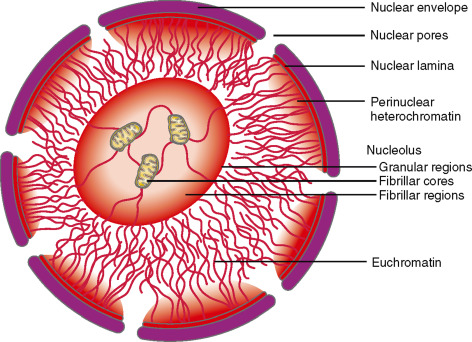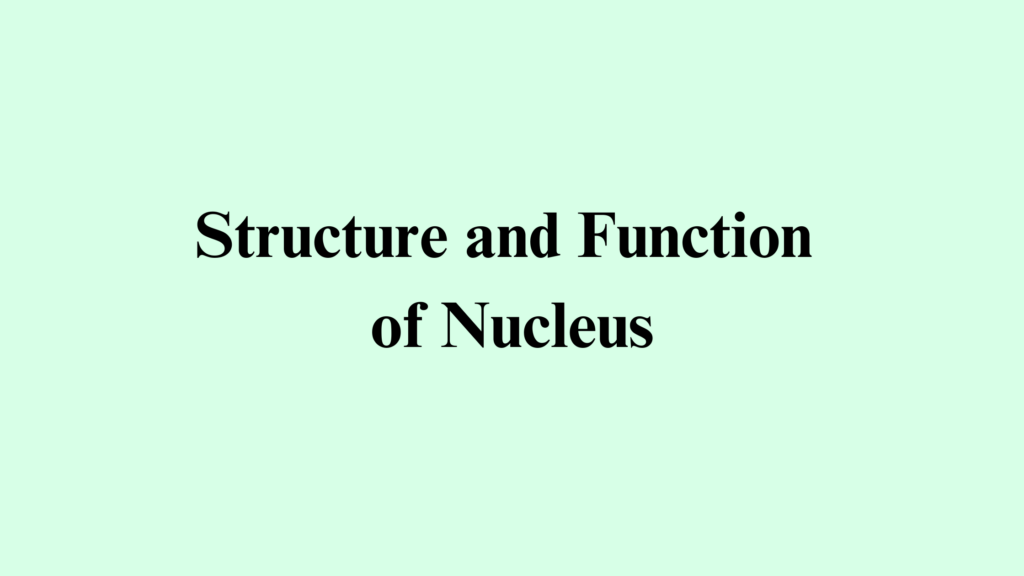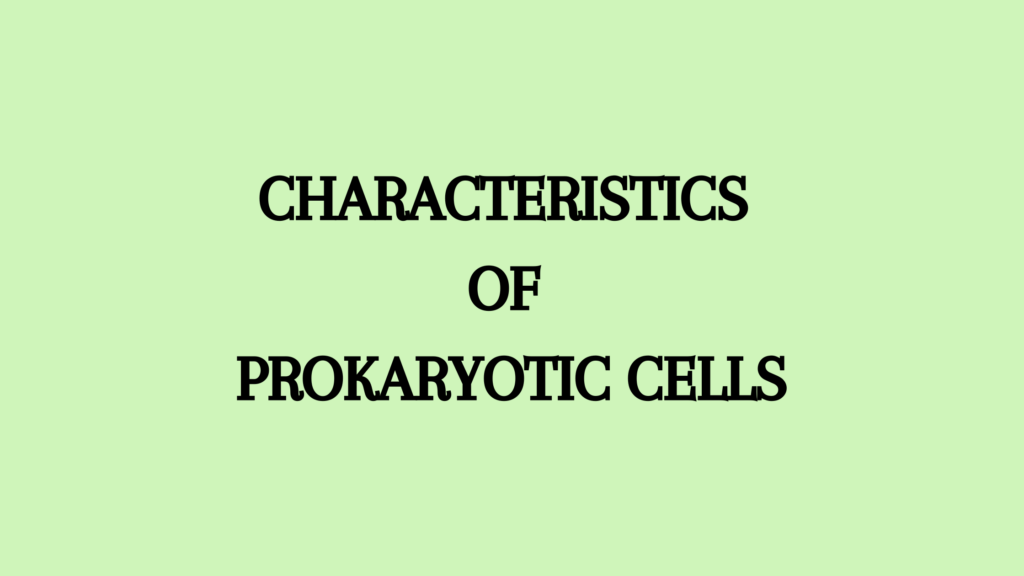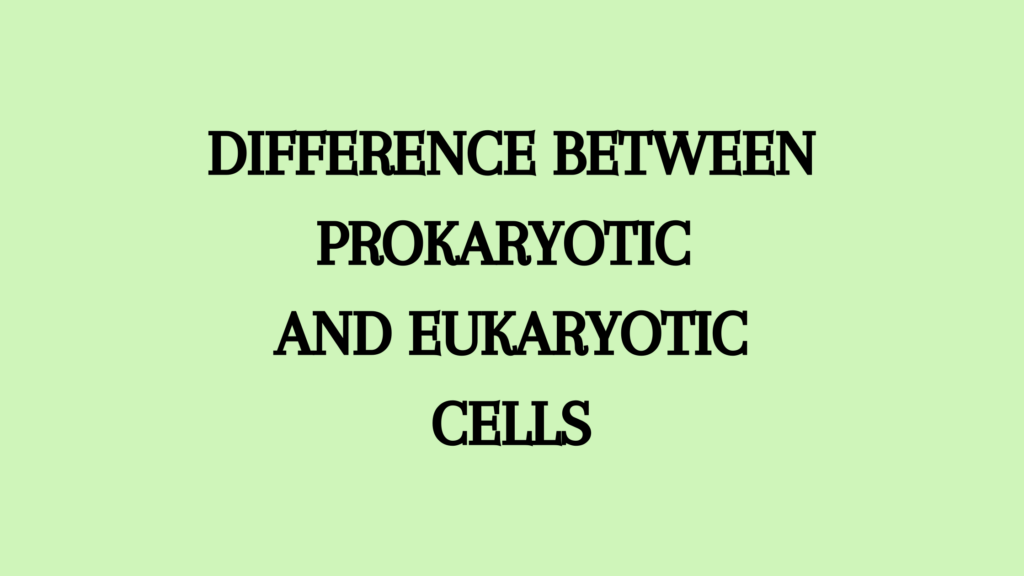The nucleus is a centrally located component which controls all the vital activities of the cytoplasm and carries the hereditary material, DNA in it. Here, we will see in detail, the structure and function of the nucleus.
The nucleus is the commanding centre for all biological activities inside the eukaryotic cell. It contains the genetic codes for protein synthesis and all characteristics of living beings.
The nucleus is separated from the cytoplasm by the nuclear envelope which is in constant communication with the cytoplasm for cell maintenance. The nucleus is located in the centre of the cells.
However mammalian erythrocytes, mature sieve tubes, etc have no nucleus. Due to the lack of a nucleus, these red blood cells are called red blood corpuscles.
Characteristics of Nucleus
- The shape of the nucleus is relative to the shape of the cell. It may be irregular, spheroid, ellipsoid, discoidal, etc.
- It occupies almost 10% of the cell. Its size varies from cell to cell and mainly depends on the number of chromosomes. A polyploid cell has a larger nucleus than a diploid or haploid cell.
- The nucleus consists of three structures – nuclear membrane, nucleoplasm and chromosomes, and nucleolus.
- The number of nuclei in a cell is usually one but it is not constant across living beings.
- It can vary from one cell to another.
Types of Nuceli
Based on the number of nuclei in a cell, cells may be classified into three.
- Mononucleate cells have one nucleus.
- Binucelate cells that have two nuclei. Cells of the liver, cartilage, Paramecium, etc are binucleated.
- Polynucleate cells have 3 or more nuclei. This number may vary from 3 to 100. Polynucleate cells of animals and plants are called syncytial cells and coenocytic cells respectively. Eg. Osteoblasts in bone marrow contain 100 nuclei in a cell. Another example is Vaucheria.
Structure of Nucleus
A nucleus has four distinct parts- nuclear membrane, nucleoplasm, chromatin fibres, and nucleolus.
Nuclear Membrane
- The nuclear membrane is a double-membranous structure.
- It forms an envelope around the nucleus and is called a nuclear envelope.
- The nuclear membrane separates the cytoplasm and the interior of the nucleus.
- The outer membrane remains continuous with the membrane of ER and plasma membrane.
- It has ribosomes attached to it for protein synthesis.
- The inner membrane contains a protein meshwork called nuclear lamina.
- The nuclear lamina is important for the assembly of interphase nuclei.
- It contains proteins that serve as binding sites for the fibrous sheath of intermediate filaments.
- The space between the outer and inner nuclear membrane is called perinuclear space.
- The newly formed proteins from the ribosomes enter this space which is continuous with the lumen of the endoplasmic reticulum.
Nuclear Pore
The nuclear membrane contains many pores called nuclear pores, through which the movement of chemical substances takes place.
- These pores have a diaphragm across the opening that limits the entry and exit of materials in and out of the nucleus.
- The number of nuclear pores or pore density is proportional to the transcriptional activity of the cell.
- This number varies from 400- 57×106 or more.
- Nuclear pores are mostly evenly distributed on the nuclear envelope or randomly arranged as seen in some cells.
- It helps with the transport of histones, ribosomes, nucleotides, ions, etc into the cytosol.

Nucleoplasm
The nucleoplasm is the semi-solid, acidophilic, granular matrix inside the nucleus and surrounding the nucleolus. It is also called karyolymph or nuclear sap.
- It contains nucleoproteins, inorganic and organic substances, nucleic acids, enzymes, minerals, proteins, etc.
- Nucleoplasm contains certain thread-like elongated structures called chromosomes. Chromosomes appear only during cell division.
- Otherwise, they appear in the form of chromatin fibres which fundamentally consist of large molecules of DNA and many nucleoproteins.
- Nucleic acids are DNA and RNA that occur as monomer nucleotides.
- Complex proteins are the other major component of nucleoplasm.
- It may be basic proteins such as nucleo-protamines and nucleo-histones.
- Nucleoplasm also contains acidic proteins and non-histone proteins such as phosphoproteins which are part of euchromatin.
- Enzymes for DNA and RNA synthesis such as polymerases, nucleoside triphosphatase, cofactors, coenzymes, ATP, acetyl-CoA, etc are also seen.
- A small fraction of lipids are also present in nucleoplasm.
- Inorganic components such as potassium, phosphorous, sodium, calcium, and magnesium are also present.
Chromatin Fibres
Chromatin fibres are elongated thread-like structures that are coiled and readily stained. They are seen in the nucleoplasm and appear only during interphase. During mitosis and meiosis, they thicken to appear as ribbon-like structures called chromosomes.
- Chromatin consists of DNA and proteins with a small quantity of RNA.
- The proteins are mainly histone but non-histone proteins are also present.
- The protein-DNA ratio averages 1%.
- Histones constitute chromatins of all eukaryotes except fungi.
- Fibres are twisted, anastomosed and uniformly distributed in the nucleoplasm.
Types of Chromatin
The two types of chromatin are heterochromatin and euchromatin.
Heterochromatin
- It is the deeply stained condensed region of chromatin. This region of the nucleus is chromocenters, karyosomes or false nucleoli.
- They occur around the nucleolus in the periphery.
- This region is genetically and metabolically inert due to a lesser amount of DNA and a larger amount of RNA.
Euchromatin
This is the lightly stained diffused region containing a large amount of DNA.
Nucleolus
The nucleolus is the prominent, spherical, colloidal and acidophilic body seen at the centre of the nucleus.
- The size of the nucleolus is relative to the synthetic activity of the cell.
- Thus, sperm cells, muscle cells, blastomeres, etc have small nucleolus.
- The number of nuclei per nucleus varies with the species and the number of chromosomes.
- The nucleolus is associated with nucleolar organisation (NO).
- There is no limiting membrane for the nucleolus.
- It contains DNA, RNA, ribosomal proteins, binding proteins, splicing nucleoproteins, etc. and enzymes.
References
- Agarwal, P. V. |. V. (2004). Cell biology, Genetics, Molecular Biology, Evolution, and Ecology: Evolution and Ecology. S. Chand Publishing.
- (2007). Regulation of Gene Expression. Medical Cell Biology (Third Edition), 149-190. https://doi.org/10.1016/B978-0-12-370458-0.50010-4
Additional Reading
- Structure and Function of Golgi Apparatus
- Endoplasmic Reticulum in Plant Cell
- Biochemistry and Structure of Nuclear Envelope




